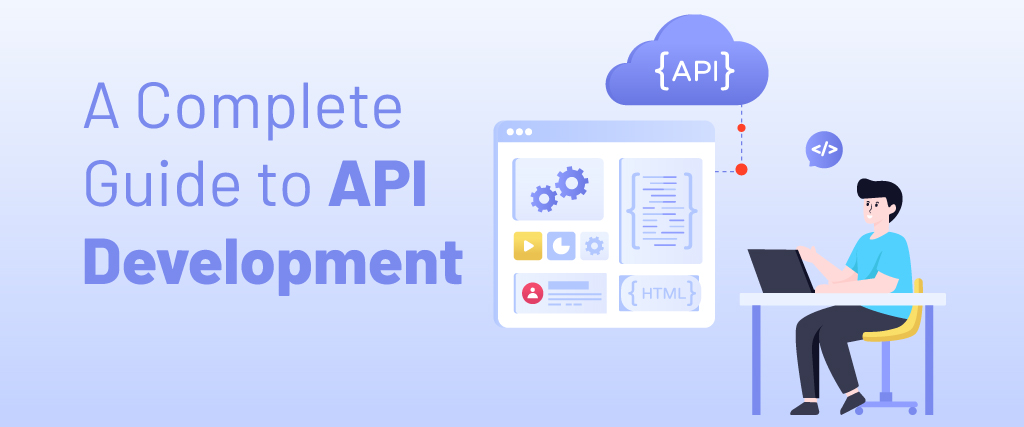A Complete Guide to API Development

API Development has become one of the most often used phrases among tech enthusiasts and any organization developing web applications worldwide. In today's environment, API is crucial to businesses and, by extension, to the economy as a whole. APIs are everywhere and are regularly used by regular people. In our daily lives, API is present in many different forms in every business, whether it is for making payments, purchasing tickets, or logging into social media platforms. APIs have developed certain amusing traits in addition to common applications. This includes the conversion of English into other languages, the distribution of the entire database of Pokemon information via the Pokemon API, and other activities.
What is API and Why Is It Important?
A collection of guidelines, rules, or standards known as an API enables improved service by letting one app utilize the features and offerings of some other app, platform, or device. The foundation of every app that deals with data or facilitates communication between two goods or services is an API. Without the involvement of developers, it enables a mobile application or platform to share its data with other applications or platforms and improve user experience. On top of that, APIs make it unnecessary to create a comparable program or platform from scratch; you can use the current one or another app/platform instead. As a result of the following factors, the API development procedure is a focus for company executives as well as app developers.Working of API
Say you went to some XYZ app or website to make a flight reservation. You completed the form, entering the departure and arrival times, the city, the flight, and other necessary information, and then you submitted it. A list of flights is displayed on the screen shortly after, together with information about the cost, departure times, and available seats. How exactly does this take place? The platform submitted a request to the airline's website to access its database and obtain the necessary data via the API interface to deliver such strict data. The website responded with the data that the platform received via API Integration and presented on the screen. The crucial element is now here: how do you create an API? What technologies and tools are available for API development? What procedures should be followed for efficient API development?Feature Requirements for an Effective API
 The API characteristics listed below are some you should take into account when creating a secure mobile application:
The API characteristics listed below are some you should take into account when creating a secure mobile application:
-
Modification timestamps/Search by criteria:
-
- These two API features are the most important ones that an app should have.
-
- This is because modifications (updates, edits, and deletions) are what we focus on immediately following the first initial data synchronization.
-
Paging:
-
- Often, we only want to see a portion of the data that has been modified rather than the entire thing.
-
- The API should be able to choose how frequently and how much data to present in this situation. Additionally, it ought to tell the user how many pages of material are still available.
-
Sorting:
-
- The API should give users the ability to order data according to the time of update or any other factor in order to make sure that the end user receives all of the pages of data one by one.
-
JSON Support/REST:
-
- While it is not required, it is advisable to think of your API as being RESTful or offering JSON support (REST) for efficient API development.
-
- The REST APIs are stateless, lightweight, and allow you to try again if the procedure to upload a mobile app fails.
-
- When it comes to SOAP, this is really difficult.
-
- A mobile app developer may easily parse JSON into any other language because its syntax is similar to that of the majority of computer languages.
Best Practices for Building the Right API

-
-
Use throttle:
App throttle is a fantastic technique to take into account for rerouting traffic overload, backing up APIs, and protecting it from DoS (Denial of Service) assaults.
-
-
-
Treat your API gateway as an enforcer:
The API gateway must be regarded as the enforcement point for setting up throttling rules, applying API keys, or using OAuth.
-
-
- It should be interpreted as a police force that allows only authorized users to access the data.
-
- It ought to give you the ability to encrypt communications or modify private data, enabling you to monitor and control API usage.
-
Allow overriding HTTP method:
-
- You must allow your RESTful API to override the HTTP method because some proxies only accept the GET and POST methods.
-
- Use the unique HTTP Header X-HTTP-Method-Override to do this.
-
Analyze the infrastructure and APIs:
-
- Real-time analysis is now feasible, but what if the API server is thought to be experiencing memory leaks, CPU overheating, or other similar problems?
-
- You can't maintain a developer on call to take into account such circumstances. However, there are several solutions on the market that you may use to accomplish this quickly, such as AWS cloud watch.
